Our development model is poisoning Dhaka

After the fall of a deeply corrupt and irresponsible government through a mass uprising, we believed that many things would improve. But our hopes have been shattered. One of our most critical concerns is related to survival—our ability to simply breathe and live.
Dhaka's air pollution remains among the worst in the world. The city continues to hold the infamous record of having the most hazardous air globally. When the Air Quality Index (AQI) exceeds 300, the air is classified as "extremely dangerous." In some areas of Dhaka, AQI has surpassed 400, even approaching 500. Even on Sunday morning, Dhaka had the worst air in the world. At such levels, the concentration of harmful particulate matter in the air makes it dangerous for humans. The situation is dire, particularly for children, the elderly, and those with pre-existing health conditions. The rate at which cases of respiratory diseases, neurological disorders, fever, cough, and lung infections are rising is alarming.
Despite these circumstances, we have not seen the government take meaningful steps to address the crisis. The situation has deteriorated to the point where people are forced to organise movements simply to protect open, green spaces like Bahadur Shah Park, Tetultola playground, Panthakunja Park, and Khilgaon playground in Dhaka, as well as in other cities. The previous government showed complete negligence to these issues, and we had hoped that the new interim government would be more responsive. However, this has not been the case.
For instance, the Panthakunja Park, which used to be a small open space with some trees, has been taken over for the construction of a ramp of the Dhaka Elevated Expressway. To prevent this, some young activists have been protesting on site for more than 50 days, and concerned citizens have expressed solidarity with them, yet the government has not responded positively. Instead, officials claim that these projects cannot be cancelled or revised. However, the ramp being built in Panthakunja was not a part of the original plan. It was introduced later to benefit certain private companies seeking to maximise their profits. An article by Kallol Mustafa recently published in this daily has detailed how such projects are often linked to private interests rather than genuine public needs.
There have been numerous proposals and projects to protect Dhaka's environment, including efforts to clean up the Buriganga River and other nearby rivers, to clean up the city's air. Loans worth hundreds of crores of taka have been organised from the World Bank and other lenders in the name of the environment's improvement. Yet, there are no visible results. Where has this money gone? Many argue that protecting the environment requires significant financial investment, but this is incorrect. Environmental protection does not require excessive funds, rather it requires stopping disastrous spending. In fact, unnecessary investments and projects that serve private interests are actively destroying the environment.
One of the primary causes of environmental degradation in Dhaka is unregulated construction. Without proper planning or assessment of long-term consequences, construction activities are going on unchecked. The construction sector now accounts for around eight percent of Bangladesh's GDP (2021). To maintain this economic growth, open spaces are being filled in, parks are being encroached upon, and land is being leased for commercial purposes. Even historic places like Bahadur Shah Park are being leased out for commercial purposes.
The fundamental issue here is that no serious effort is being put into reducing air pollution in Dhaka. Many of the environmental projects funded by international funding agencies such as the World Bank and Asian Development Bank (ADB) have ironically contributed to its destruction instead. For example, under the guise of "social forestry" projects, natural forests in Bangladesh at various locations have been destroyed and replaced with commercial plantations of eucalyptus and acacia, which have had a devastating ecological impact. The destruction of the Chakaria Sundarbans is a prime example of that. In the name of energy development, Bangladesh has also built multiple coal-fired power plants, significantly increasing air pollution. While projects aimed at reducing pollution exist, the primary beneficiaries are consultants, bureaucrats who enjoy foreign trips, and individuals engaged in import-dependent activities.
Among other major causes for pollution are brick kilns, deforestation and river encroachments. Addressing these issues does not require massive financial investments; rather, it demands proper planning and decisive government action. Recently, the government attempted to ban polythene bags, but it was ineffective. One of the key reasons was the significant financial investment and employment tied to the polythene industry. Transitioning away from polythene to natural fibre-based alternatives requires a well-planned approach, including consultation with industry stakeholders and ensuring the availability of viable substitutes. But instead of implementing a structured transition plan, the government simply issued a top-down directive, which predictably failed.
Bangladesh has no shortage of natural fibres, and we could have developed a thriving industry around environment-friendly products to replace polythene. Unfortunately, there has been no development in the jute industry. Loans from the World Bank, rather than promoting jute-based alternatives, contributed to the industry's decline. Meanwhile, because of indiscriminate use of cheap polythene, Dhaka's drainage system remains clogged, leading to severe waterlogging and further river pollution.
Dhaka could have been a much healthier city. Surrounded by rivers, it had the potential to be an environmentally sustainable urban area. If its rivers had been preserved, its open spaces protected, and large-scale afforestation efforts undertaken, the city's air quality would have significantly improved. Adequate greenery—fruit-bearing trees, flowering plants, and natural forests—could have dramatically reduced disease rates and provided a much healthier living environment.
Instead, Dhaka is surrounded by countless brick kilns, despite repeated discussions about their harmful impact. Most of these kilns operate illegally. They must be shut down, and viable alternatives to bricks must be introduced.
If immediate steps are not taken, Dhaka will fully transform into a city of sick people. We are already witnessing a sharp increase in illnesses, and this will only worsen if urgent measures are not implemented. There are no playgrounds for children, no open spaces where people can breathe fresh air, and the water we drink is contaminated. Citizens cannot even enjoy a clean and peaceful time by the river.
This extreme deprivation stems from the current development model, which prioritises profit maximisation for a select group over public welfare. Projects are designed to benefit certain influential groups through lobbying, while the common people—who bear the consequences—are entirely excluded from the decision-making process.
The present government frequently talks about reforms, but what kind of reforms are they referring to? Reform is not an abstract concept; it requires concrete actions. True reform should involve policies that protect Dhaka's residents and their right to a liveable city.
Anu Muhammad is a former professor of economics from Jahangirnagar University.
Views expressed in this article are the author's own.
Follow The Daily Star Opinion on Facebook for the latest opinions, commentaries and analyses by experts and professionals. To contribute your article or letter to The Daily Star Opinion, see our guidelines for submission.
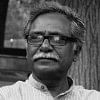
 For all latest news, follow The Daily Star's Google News channel.
For all latest news, follow The Daily Star's Google News channel. 
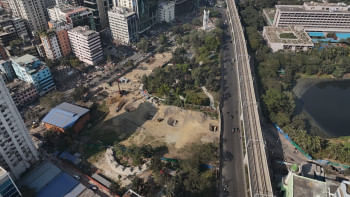

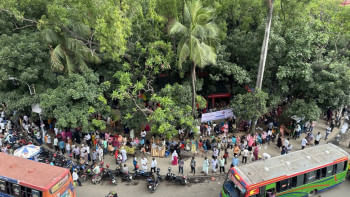



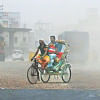
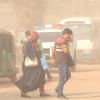
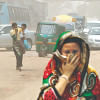
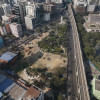


Comments